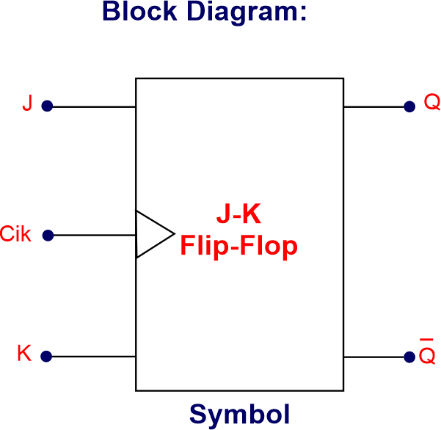J-K Flip-Flop in Digital Electronics
The J-K flip-flop is an electronic circuit forming digital electronics' foundation. It is a type of bistable latch, meaning it can be in one of two stable states and can store binary data. This simple circuit has been a fundamental building block in the development of digital electronic circuits and has played a critical role in the advancement of modern technology.
The J-K flip-flop is edge-triggered, meaning it responds to changes in its inputs (the J and K inputs) at the leading edge of a clock signal. The J-K flip-flop has two inputs, J and K, and two outputs, Q and Q', where Q represents the state of the flip-flop, and Q' represents its complement.
The J-K flip-flop was first introduced in the early 1950s. Since then, it has been used in various applications, including computer memory, digital clocks, and counter circuits. The circuit's versatility, reliability, and speed have made it an important component in modern electronic systems.
How does J-K Flip-Flop Work?
The J-K flip-flop is a type of sequential logic circuit, meaning that its output depends on its current state and the values of its inputs. The J-K inputs determine the state of the flip-flop, and the clock signal determines when the inputs are processed.

The J-K flip-flop operates in two modes: set and reset.
- In the set mode, the J input is set to a high value, and the K input is set to a low value, causing the Q output to change to a high value and the Q' output to change to a low value.
- In the reset mode, the K input is set to a high value, and the J input is set to a low value, causing the Q output to change to a low value and the Q' output to change to a high value.
In addition to the set and reset modes, the J-K flip-flop has a toggle mode, in which both J and K inputs are set to high values. This causes the state of the flip-flop to switch from its current state to the opposite state, and the output to change from high to low or from low to high.
The J-K flip-flop is a master-slave flip-flop, meaning that the inputs are processed by one section of the circuit while another generates the outputs. The input section is referred to as the master stage, and the output section is referred to as the slave stage.
Advantages of the J-K Flip-Flop
- The J-K flip-flop has several advantages over other types of flip-flops. Firstly, it is a universal flip-flop, meaning it can be used to implement any type of flip-flop, including the S-R flip-flop, T flip-flop, and D flip-flop. This versatility makes it a convenient building block for a wide range of digital circuits.
- Another advantage of the J-K flip-flop is its ability to switch between the set and reset modes and the toggle mode. Switching modes makes it possible to build various digital circuits, such as binary counters and digital clocks.
- The J-K flip-flop is also a relatively fast circuit, making it ideal for high-speed digital systems. Additionally, it is a reliable circuit, which is crucial in applications where data must be accurately stored and retrieved. The J-K flip-flop's master-slave configuration also helps to minimize the possibility of metastable states, where the circuit is unstable and can produce incorrect output.
- It can be easily cascaded or connected in series to form larger digital circuits. For example, J-K flip-flops can be used to build binary counters, which are used to count events in digital systems. The ability to cascade J-K flip-flops makes it possible to build large digital memory systems, such as computer RAM.
In conclusion, the J-K flip-flop is an important building block in digital electronics. Its versatility, speed, and reliability have made it popular for various applications, from computer memory to digital clocks and counter circuits. As technology advances, the J-K flip-flop will likely continue to play a critical role in developing new digital systems.